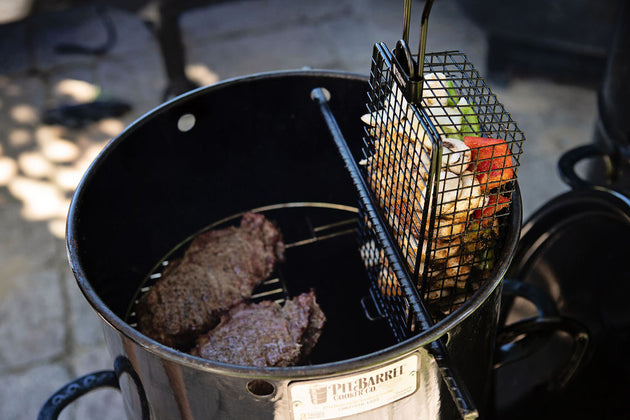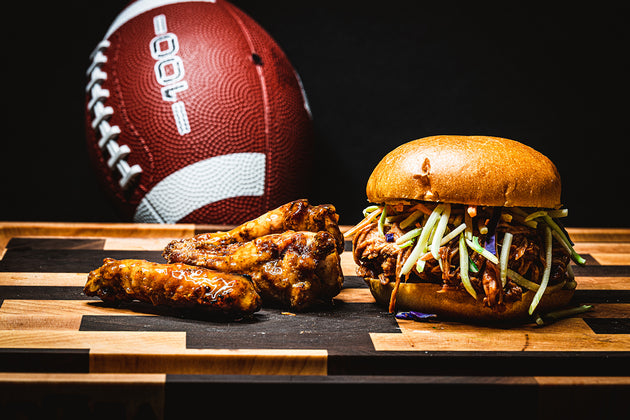Charcuterie Board Recipe
The word charcuterie comes from the French words chair “flesh” and cuit “cooked,” literally: cooked flesh. Sounds good to us! When assembling your charcuterie board keep in mind whether it is going to be a starter course/appetizer or whether it will be served as a main course. If it’s going to be served as an appetizer, you should only need about 2 oz of meat per person; if it’s going to be a main dish, estimate about 5 ounces of meat per person.
One way to ensure your charcuterie board will wow is to pay attention to contrasts and complements for flavors, textures, and colors. You want flavors that work together, but you also want to contrast for true flavor explosion: salty and sweet, savory and sweet, dry with wet, hard with soft, crunchy with chewy.
Another key ingredient to a good charcuterie board is the beverage pairing. For wine: pinot noir and just off-dry Rieslings work well with the variety on the board. For beer: stick with saisons, wild ales, and porters – all should please many and cut through the fats and salt of the cured meats. If non-alcoholic is your preference then a good sparkling mineral water with fresh sliced citrus and/or cucumbers can provide delicious, light refreshment.

Ingredients
- Something Pre-Sliced (pick 2) – Proscuitto, Speck, Jamon, Mortadella, etc.
- Something You Slice (pick 1)– Salami, Chorizo, Smoked Ham, Capicola
- Something Spreadable (pick 1)– Pate, Terrine, Rillettes, ‘Nduja (soft, spicy, pork spread)
- Some Cheese (pick 1 -2) – adds creamy, tangy textures to go with the salty meats
- Some Accents (pick 3 – 4)–
- Olives
- nuts (almonds, cashews, pistachios, etc.)
- chocolate
- fresh fruit (if you choose something like apples/pears, make sure to slice into bite size pieces)
- dried fruit
- crackers or fresh baked baguette/batard
- pickled items (like pickles or giardiniera)
- jam and/or preserves
- honey (buy local and unpasteurized for best flavor)
Process
- Before you can place anything on your EndGrain you need to prep everything. Wash any fresh fruit you’re using and toast any bread you might be serving with the board.
- Next, pull out the meats you are using. For the piece that you and your guests will be slicing on the board, go ahead and slice a few pieces. This will encourage your guests to try it and make them more comfortable with taking the initiative to slice and serve themselves as the pre-sliced pieces disappear.
- Look at your board and keep in mind where it will be sitting when it’s served. You want to keep in mind how guests will be reaching across the board and what flavors will play well with each other. Place the meats in different spots on the board with space in-between. That space will be filled with other items.
- Now, take whatever spreadable meat goodness you’ve chosen, and put that towards the center. This way it can get a little messy without falling off the board.
- Place the cheese(s) next to meats with which they would work well. This is based entirely on preference, but some great pairings are salami and gouda, soppressata and havarti, or prosciutto and parmesan.
- At this point, if you’re using any honey, jam/preserves, or mustard, you’ll want to find spots on the board for them. Again, pay attention to what flavors work well together. If the jar or container the spread came in is larger than would comfortably fit, place enough to share in a small bowl or ramekin that will fit on the board.
- Fill in any spaces left with the sliced fresh fruit, toast/crackers, nuts, and any other accents.
- Serve immediately and enjoy!



